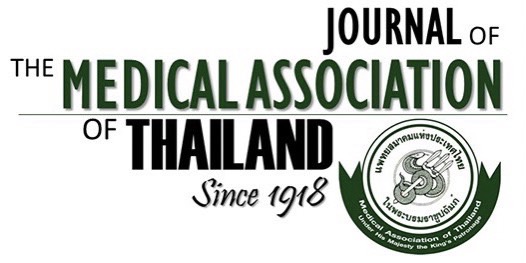Reliability of Visual Acuity Measurements Taken with a Notebook and a Tablet Computer in Participants Who Were Illiterate to Roman Characters
Paisan Ruamviboonsuk MD*, Napitchareeya Sudsakorn MD*, Thanapong Somkijrungroj MD*, Chayanee Engkagul MD*, Montip Tiensuwan PhD**
Affiliation : *Department of Ophthalmology, Rajavithi Hospital, College of Medicine, Rangsit University, Bangkok, Thailand ** Department of Mathematics, Faculty of Science, Mahidol University, Bangkok, Thailand
Background : Electronic measurement of visual acuity (VA) has been proposed and adopted as a method of determining VA
scores in clinical research. Characters (optotypes) are displayed on a monitor screen and the examinee selects a match and
inputs his choice to another electronic device. Unfortunately, the optotypes, called Sloan letters, in the standard protocol are
10 Roman characters. This limits their practicability for measuring VA of patients who are illiterate to these characters. The
authors introduced a method of displaying the Sloan letters one by one on a notebook and all 10 Sloan letters on a tablet
computer screen. The former is for testing the patients whereas the latter is for them to input their responses by tapping on a
letter that matches the one on the notebook screen.
Objective : To assess test-retest reliability of VA scores determined with this method.
Material and Method: Participants without ocular abnormality were recruited to have their right eyes measured with the
same VA measurement method twice, one week apart. Those who were illiterate to Roman characters were enrolled for the
aforementioned method for measuring their VA (Tablet group). A 15-inch display notebook computer and a 9-inch display
tablet computer (iPad) communicated via a local wireless data network provided by a Wi-Fi router. Those who understood
Roman characters were enrolled to have measurements with a 17-inch desktop computer and an infrared wireless keyboard
(Keyboard group). Both methods used the same protocols and software for VA measurements. Reliability of VA scores
obtained from each group was assessed by the confidence interval (CI) of the difference of the scores from the test and retest.
The t test was used to analyze differences in mean VA scores between the test and retest in each group with p < 0.05 determined
as statistically significant.
Results : There were 49 and 50 participants in the Tablet and Keyboard group respectively. The 95% CI of the difference
between the scores from the test and retest in each group was 2 letters. Approximately 95% of participants in each group had
an absolute difference of the scores between the test and retest of 7 letters. The mean of VA scores from the first test was
significantly different from that of the second test in the Keyboard group (one-letter difference, p = 0.049); there was no
significant difference between these scores in the Tablet group (0.1-letter difference, p = 0.86).
Conclusion : Tablet computers may be used to assist patients who are illiterate to Roman characters in having their VA
measured with the standard electronic protocol. This preliminary study suggested that the proposed method should be useful
for reliable measuring VA outcome in multicenter international clinical trials without encountering a language barrier.
Keywords : Electronic visual acuity, Computerized visual acuity, ETDRS, Early treatment diabetic retinopathy study visual acuity, Visual acuity measurement, Test-retest reliability, Tablet computer, iPad, Visual acuity



